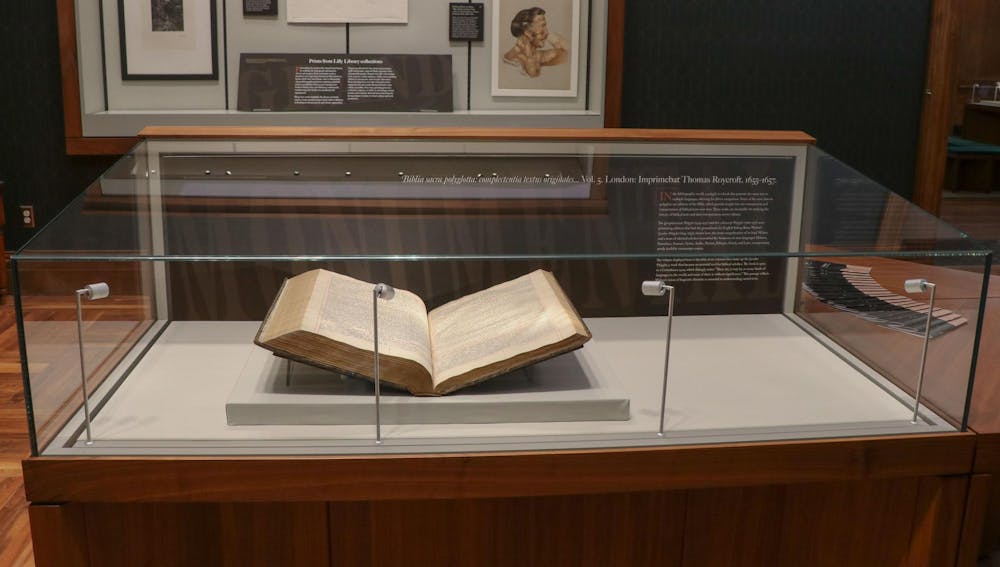Woodblock prints with Buddhist and Daoist imagery, the Gutenberg Bible with moveable type, books containing multiple languages and hand-drawn maps of the Caribbean islands and Mexican coastline surround the north and south galleries of the Lilly Library.
IU’s Lilly Library is hosting the first phase of its exhibition “The Big Picture: Great Moments in Document(ed) History” from March 17 through July 19. It displays big printed and written documents from different cultures to show how the historical ideas behind the pieces developed over different time periods. The display features artwork, maps, books, scrolls, newspapers, serials, prints and posters.
“One of the things that we were hoping to show is these items are not only large in size, but that they often indicate that large ideas are at play,” Sarah McElroy Mitchell, curator of Religious Collections at the Lilly Library, said.
Erin Chiparo, an assistant librarian at Lilly Library, and McElroy Mitchell curated the exhibition. Jenny Mack, the former exhibition specialist who now works with the McCalla School, also helped design the exhibition.
Chiparo and McElroy Mitchell said they wanted to create an exhibition that included large items embodying big intellectual and spiritual ideas. For instance, maps of comets, scrolls used for religious texts and serials of larger works released by small bits.
The printed and written pieces in the exhibition range in physical dimensions. In particular, the 1827 edition of John Milton’s “Paradise Lost” is 33 x 21 inches to 4 inches thick and Chinese woodblock from the late nineteenth century is 28 x 14.5 inches.
However, Chiparo and McElroy Mitchell said they faced challenges when choosing the objects to feature because they love so many items in the Lilly Library’s large archive.
Chiparo said some of the most attention-grabbing pieces at the exhibition are the two newspaper features from The New York Times and New York Herald that reported on the assassination of former U.S. President Abraham Lincoln. At the time of Lincoln’s assassination, rumors swirled as to who was behind the shooting and what really happened. Chiparo and McElroy Mitchell said the newspaper features show how hard the press worked daily to get the latest information about Lincoln’s death to keep the public informed.
“Printed sheets, thousands and thousands, are being made by these people who are working in the press each day,” Chapiro said. “The amount of information, that is, even if you're just looking in the case at these articles, it's kind of hard to believe the public had access to basically every detail surrounding the events of the president's death.”
Every Friday at 2 p.m., the library offers tours of their current galleries. Typically, an employee talks about the history of the library and its collections while giving visitors a tour. The tour concludes with a show and tell of items from the collections.
In March, the library had 981 visitors, according to Alex Caba who keeps track of the data at Lilly Library. They’re expecting to see more visitors viewing the exhibition this month.
“I think being, like, physically confronted with the items can be really instructive for people and excite them and be like, ‘Okay, this is how it looked’ when it was first being viewed by the public,” McElroy Mitchell said. “So, I love that people are making the effort to come in.”
The first phase of the exhibition will remain open in both galleries at the Lilly Library until July 19 and fully conclude at the end of 2025. Visitors can stop in the gallery 9:30 a.m. to 5:30 p.m. Monday through Thursday, 9:30 a.m. to 5 p.m. Friday and 10 a.m. to 4 p.m. Saturday. The Lilly Library is closed on Sunday.
More information on the exhibit can be found on the Lilly Library website.






